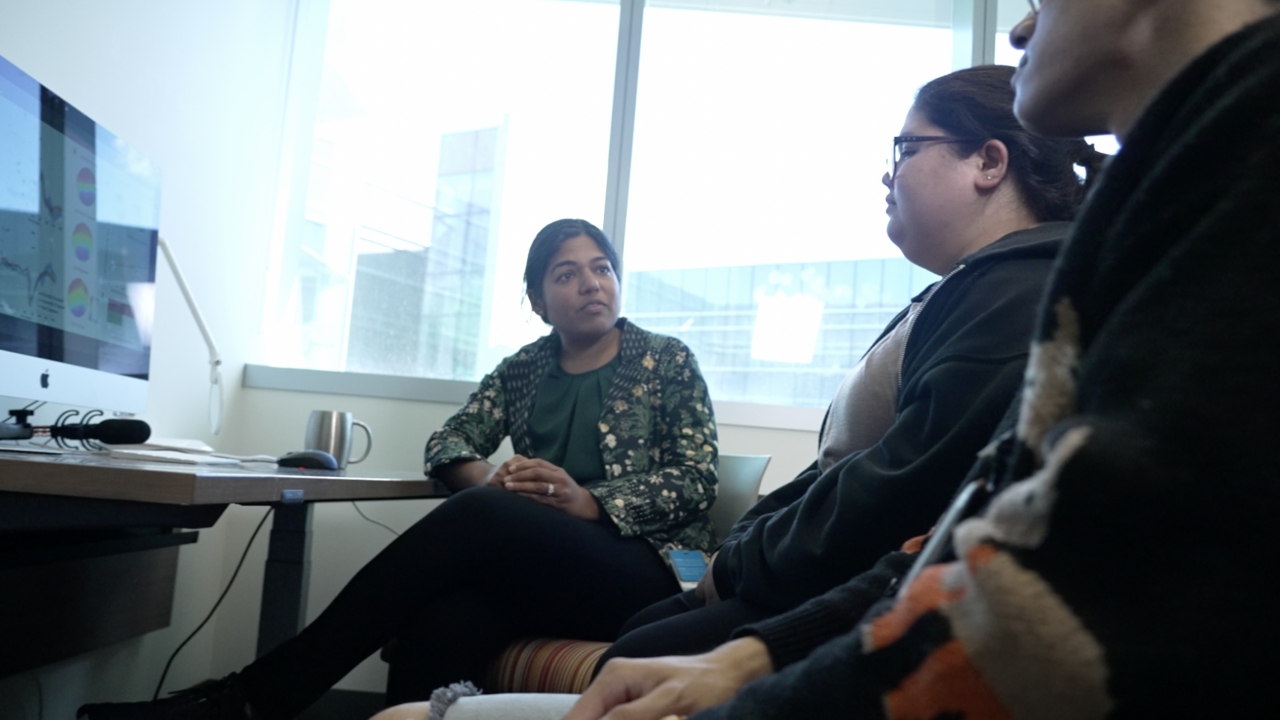Summer is almost here, which means in some parts of the country, wildfire season is on the horizon.
Climate change has pushed winters to be shorter, and with less snow than usual, the U.S. Forest Service points out wildfire "season" is becoming more of a year-round event. That's especially troubling given how many communities are still reeling from the impacts of past wildfire devastation.
Now, some researchers are looking into a phenomenon of so-called "climate trauma" — the trauma for survivors who lived through extreme weather events, and the climate anxiety felt by younger generations.
One such climate trauma example is for residents of Butte County, California, who survived the 2018 Camp Fire. The area was part of a wildland urban interface at higher risk of wildfire. Rising temperatures from climate change, high Santa Ana winds and dry winds added to a fast moving wildfire that killed 85 people and destroyed nearly 20,000 buildings in the towns of Concow, Magalia and Paradise.
New research shows that the brains of those survivors showed deficits at least a year after the event.
The morning of Nov. 8, 2018 is etched in Cheyenne Arrington's brain.
Just after the sun was rising, she was up early at school and looked out the window to see a red sky. She rushed to her family home on a ridge near Pentz Road in Paradise, California.
"I'm just driving towards this ash cloud, and it's the weirdest thing because you hit it at one point, like you entered the ash cloud, and it just went totally dark," Arrington said. "I knew if I went in, there might not be an easy way out, but my family was at home. My dad was getting ready for surgery that morning at the hospital, so I made it back home. I immediately went to the back porch, and I saw the fire coming down over the edge, and it was moving really quick, just from going inside to the outside. We saw it coming down the canyon."
There were only two roads out of town. It took them five hours to escape, stuck in traffic that was backed up for miles.
Arrington and her family were safe, but they lost one of their cats. After three months of uncertainty, they returned for the first time.
"That was so surreal because ... our chimney was still there, and our pots and pans were still hanging on the brick wall ... It's like, I was there. I hung that there, and now it's gone. And it was heartbreaking on so many levels," Arrington said.
Nine-and-a-half hours south of Paradise, researchers at NEATlabs at the University of San Diego are learning more about Camp Fire survivors like Arrington. While Arrington participated in an initial survey, some other survivors went on to participate in brain mapping. The brain mapping findings were recently published in PLOS Climate.
Co-director Jyoti Mishra explained they found specific neural changes were happening in the brain that impacted how hard it had to work to do simple functions.
"Paying attention, ignoring distractions, memorizing items that we need to remember for brief periods of time, processing emotions of others," Mishra said.
The research team showed Scripps News' Lindsey Theis how they used brain mapping and EEG computational technology. Participants wear a cap and take a 30 to 40-minute long test with brief games. The cap sends electrical readings from the brain.
"We found that the people who were most directly impacted [by the fire] were putting in the most cognitive effort," Mishra said. "We actually do see these cognitive deficits emerging, and we see very significant changes in brain function. And that is concerning to us."
This is early research, and there's many questions still to answer, including if brain changes from climate trauma would be permanent.
As for Arrington, she says dark humor, her family and being active have helped her mental health.
"This is the deadliest and most destructive wildfire in California history, and to know those were my friends and my family and my hometown, that was really, really hard to see," Arrington said. "Definitely I still struggle with it sometimes, and I will for the rest of my life. Everybody has their struggles."
There are signs all around of the fire: Far fewer homes, a neighbor's melted car, a backyard canyon once filled with trees now with a straight view to the creek below.
But Arrington has still found some of her peace in the new family home.
"Having had insurance and being able to rebuild, it's very rewarding to know that they're taken care of now and they're safe," she said.
Correction: A previous version of this story mischaracterized Arrington's role in the study. While she participated in an initial survey, she was not part of the smaller cohort that underwent brain scans. This story has been updated.







